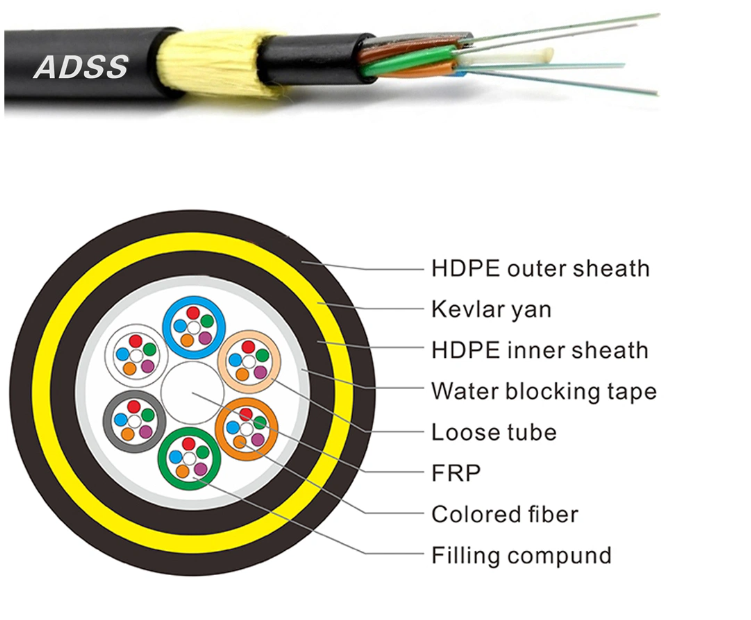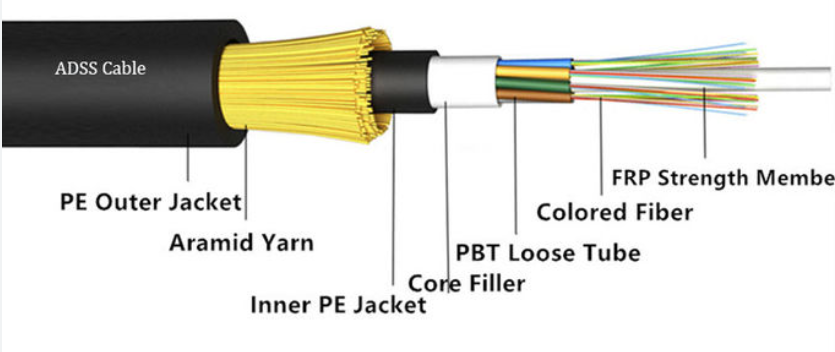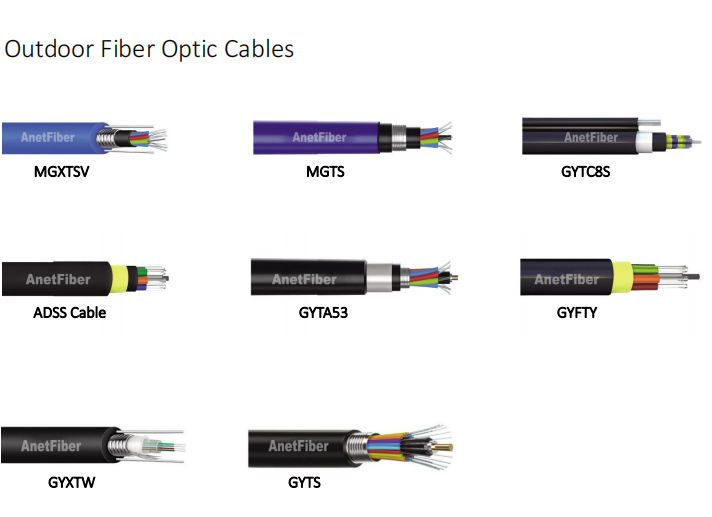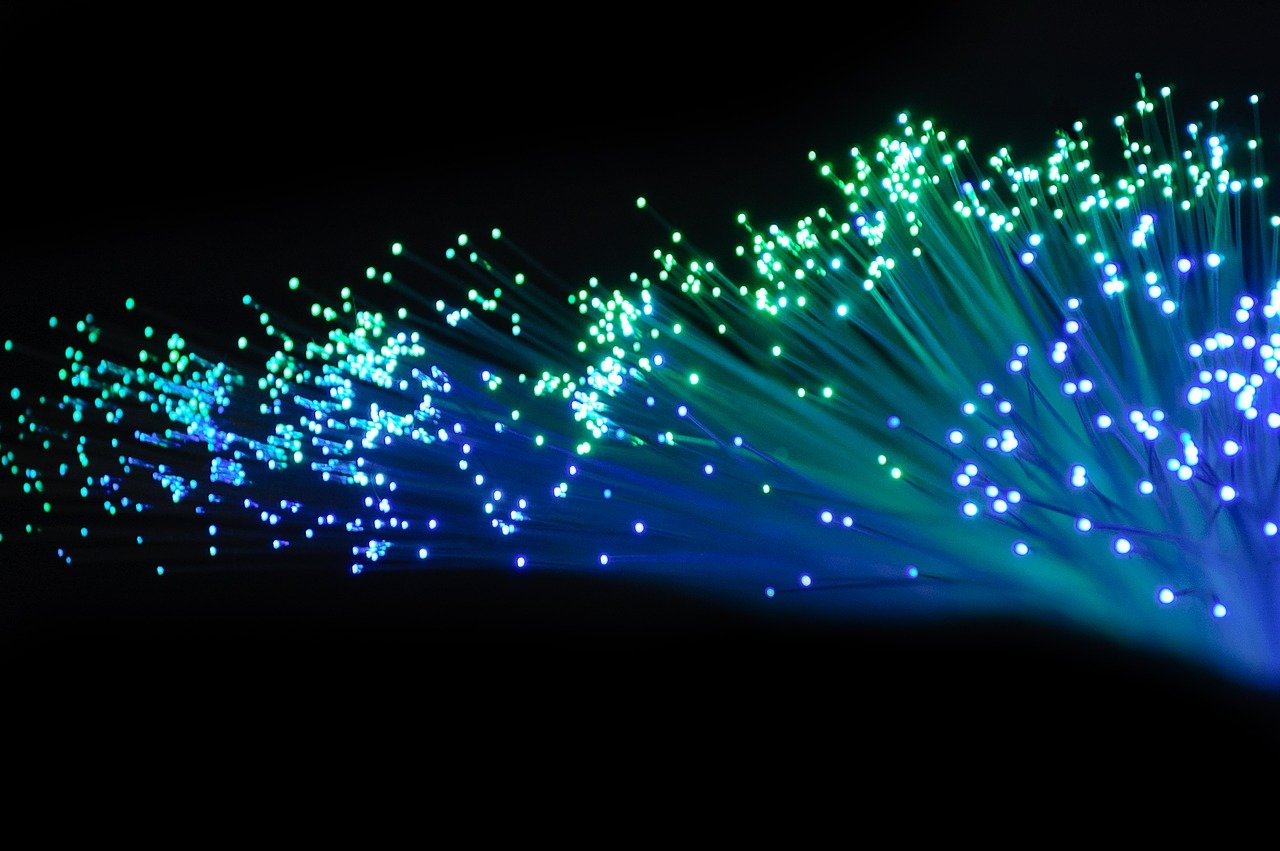ADSS Fiber Cable vs. Other Cables: Choosing the Right Option for Long Span Applications

Benefits of ADSS Fiber Cable in Long Span Applications
ADSS (All-Dielectric Self-Supporting) fiber optic cable offers several advantages when it comes to long span applications. Firstly, it possesses high tensile strength, allowing it to withstand the tension and stress that occur over long distances. This makes it ideal for spanning across vast areas without the need for additional support structures. Secondly, ADSS fiber cable is highly resistant to environmental factors such as moisture, UV radiation, and temperature fluctuations. It can withstand harsh weather conditions, ensuring reliable performance even in challenging environments. Lastly, ADSS fiber cable offers low installation costs compared to other options, making it a cost-effective choice for long span applications.
Advantages of ADSS Fiber Cable
ADSS (All-Dielectric Self-Supporting) fiber cable offers several key advantages that make it a preferred choice for long span applications.
High Tensile Strength
ADSS fiber cable is designed with high tensile strength, allowing it to withstand the high tension and stress that occur over long distances. This makes it an ideal solution for spanning across vast areas without the need for additional support structures. The cable's ability to handle these forces ensures reliable performance and minimizes the risk of failure or damage.
Resistance to Environmental Factors
Another significant advantage of ADSS fiber cable is its exceptional resistance to environmental factors. It can withstand harsh weather conditions, including strong winds, extreme temperatures, and heavy precipitation. The cable's construction materials are specifically chosen to be resistant to moisture, UV radiation, and temperature fluctuations. This resilience ensures that the cable maintains its performance and reliability even in challenging environments.
By being able to resist these environmental factors, ADSS fiber cable reduces the risk of signal loss or degradation caused by external elements. This makes it a reliable choice for long span applications where cables are exposed to various weather conditions throughout their lifespan.
In summary, the high tensile strength and resistance to environmental factors make ADSS fiber cable a superior option for long span applications. Its durability and reliability ensure consistent performance even under demanding circumstances, making it a preferred choice for telecommunications projects requiring extended coverage.

Installation and Maintenance Considerations
Proper installation and maintenance are crucial for ensuring the optimal performance and longevity of ADSS (All-Dielectric Self-Supporting) fiber cable in long span applications.
Proper Installation Techniques
During installation, it is essential to follow proper techniques to ensure the cable's integrity and functionality. This includes ensuring proper tensioning and sag calculations. Adequate tensioning helps maintain the cable's structural integrity, preventing excessive strain or sagging. Accurate sag calculations are necessary to determine the appropriate height and clearance for the cable, considering factors such as temperature variations and wind loads.
Additionally, using appropriate hardware and equipment is vital for successful installation. This includes selecting suitable clamps, brackets, suspension devices, and other supporting components that are compatible with ADSS fiber cable. Following manufacturer guidelines and industry best practices will help ensure a secure and reliable installation.
Regular Inspection and Maintenance
Regular inspection and maintenance play a critical role in identifying potential issues early on, preventing service disruptions, or costly repairs. Periodic checks should be conducted to assess the condition of the cable, looking for signs of damage or wear. This includes inspecting for physical damage, loose fittings, or any environmental factors that may have affected the cable's performance.
Cleaning measures should also be implemented to remove any debris or contaminants that could impact signal transmission. Additionally, protective measures such as applying appropriate coatings or sheathing can help safeguard the cable against environmental elements like moisture or UV radiation.
By following proper installation techniques and implementing regular inspection and maintenance protocols, telecommunication professionals can ensure the optimal performance and longevity of ADSS fiber cables in long span applications. These proactive measures help minimize downtime, extend the lifespan of the cables, and maintain reliable connectivity throughout their operational life.
Comparison with Other Cable Types
When considering long span applications, it's important to compare ADSS (All-Dielectric Self-Supporting) fiber cable with other cable types to make an informed decision based on specific project requirements.
ADSS Fiber Cable vs. OPGW
ADSS fiber cable offers several advantages over Optical Ground Wire (OPGW). Firstly, ADSS cables are easier to install due to their lightweight and all-dielectric construction. This eliminates the need for additional support structures, reducing installation time and costs. On the other hand, OPGW provides higher current-carrying capacity, making it suitable for applications requiring power transmission alongside data communication.
ADSS Fiber Cable vs. Aerial Copper Cable
When comparing ADSS fiber cable with aerial copper cable, there are notable differences in terms of bandwidth and environmental resistance. ADSS fiber cable provides higher bandwidth and data transmission rates, making it ideal for high-speed internet and telecommunications applications. Additionally, its all-dielectric construction makes it resistant to environmental factors such as moisture, UV radiation, and temperature fluctuations. In contrast, aerial copper cables are more susceptible to these environmental factors, which can lead to signal degradation or interruptions.
In summary, while OPGW may offer higher current-carrying capacity for power transmission needs, ADSS fiber cable excels in terms of ease of installation, lower costs, higher bandwidth capabilities, and resistance to environmental factors compared to both OPGW and aerial copper cables. Evaluating the specific requirements of the application will help determine which cable type is best suited for long span projects in the telecommunications industry.

Choosing the Right Cable for Long Span Applications
When it comes to selecting the appropriate cable for long span applications, it is crucial to consider the specific requirements of the project. Factors such as cost, performance, and durability should be carefully evaluated. Assessing the budget constraints, desired data transmission rates, and environmental conditions will help determine which cable type best suits the project's needs.
To make an informed decision, it is recommended to consult with experts in the telecommunications industry. Their expertise and knowledge can provide valuable insights into choosing the right cable for long span applications. By considering all these factors and seeking professional advice, you can ensure that your telecommunications project is equipped with a cable that meets your requirements in terms of cost-effectiveness, performance, and durability.
See Also
The Importance of Fiber Optic Cables in Subterranean Setups
FastConnect vs Alternative Connection Choices: A Thorough Analysis
Simplify Cable Solutions with Preconn: A Quick and Effortless On-Site Termination Handbook
Unleashing the Potential of FastConnect: Features and Advantages
Robust and Dependable 2 in 1 Harden Optical Connector Cable Assemblies


